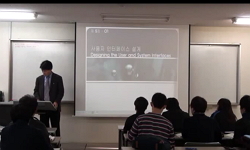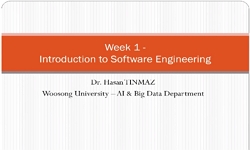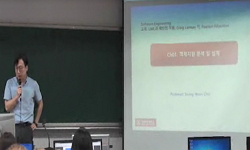- CONTENTS
- 1 The Role of Metrics and Models in Software Development = 1
- 1.1 Introduction = 1
- 1.2 The Software Development Process = 3
- 1.2.1 The Software Life Cycle = 4
다국어 입력
あ
ぁ
か
が
さ
ざ
た
だ
な
は
ば
ぱ
ま
や
ゃ
ら
わ
ゎ
ん
い
ぃ
き
ぎ
し
じ
ち
ぢ
に
ひ
び
ぴ
み
り
う
ぅ
く
ぐ
す
ず
つ
づ
っ
ぬ
ふ
ぶ
ぷ
む
ゆ
ゅ
る
え
ぇ
け
げ
せ
ぜ
て
で
ね
へ
べ
ぺ
め
れ
お
ぉ
こ
ご
そ
ぞ
と
ど
の
ほ
ぼ
ぽ
も
よ
ょ
ろ
を
ア
ァ
カ
サ
ザ
タ
ダ
ナ
ハ
バ
パ
マ
ヤ
ャ
ラ
ワ
ヮ
ン
イ
ィ
キ
ギ
シ
ジ
チ
ヂ
ニ
ヒ
ビ
ピ
ミ
リ
ウ
ゥ
ク
グ
ス
ズ
ツ
ヅ
ッ
ヌ
フ
ブ
プ
ム
ユ
ュ
ル
エ
ェ
ケ
ゲ
セ
ゼ
テ
デ
ヘ
ベ
ペ
メ
レ
オ
ォ
コ
ゴ
ソ
ゾ
ト
ド
ノ
ホ
ボ
ポ
モ
ヨ
ョ
ロ
ヲ
―
http://chineseinput.net/에서 pinyin(병음)방식으로 중국어를 변환할 수 있습니다.
변환된 중국어를 복사하여 사용하시면 됩니다.
예시)
- 中文 을 입력하시려면 zhongwen을 입력하시고 space를누르시면됩니다.
- 北京 을 입력하시려면 beijing을 입력하시고 space를 누르시면 됩니다.
А
Б
В
Г
Д
Е
Ё
Ж
З
И
Й
К
Л
М
Н
О
П
Р
С
Т
У
Ф
Х
Ц
Ч
Ш
Щ
Ъ
Ы
Ь
Э
Ю
Я
а
б
в
г
д
е
ё
ж
з
и
й
к
л
м
н
о
п
р
с
т
у
ф
х
ц
ч
ш
щ
ъ
ы
ь
э
ю
я
′
″
℃
Å
¢
£
¥
¤
℉
‰
$
%
F
₩
㎕
㎖
㎗
ℓ
㎘
㏄
㎣
㎤
㎥
㎦
㎙
㎚
㎛
㎜
㎝
㎞
㎟
㎠
㎡
㎢
㏊
㎍
㎎
㎏
㏏
㎈
㎉
㏈
㎧
㎨
㎰
㎱
㎲
㎳
㎴
㎵
㎶
㎷
㎸
㎹
㎀
㎁
㎂
㎃
㎄
㎺
㎻
㎽
㎾
㎿
㎐
㎑
㎒
㎓
㎔
Ω
㏀
㏁
㎊
㎋
㎌
㏖
㏅
㎭
㎮
㎯
㏛
㎩
㎪
㎫
㎬
㏝
㏐
㏓
㏃
㏉
㏜
㏆
https://www.riss.kr/link?id=M1032675
- 저자
-
발행사항
Menlo Park, Calif. : Benjamin/Cummings Pub. Co., c1986
-
발행연도
1986
-
작성언어
영어
- 주제어
-
DDC
005.1 판사항(19)
-
ISBN
0805321624
-
자료형태
단행본(다권본)
-
발행국(도시)
California
-
서명/저자사항
Software engineering metrics and models / S.D. Conte, H.E. Dunsmore, V.Y. Shen.
-
형태사항
xvii, 396 p. : ill. ; 25 cm.
-
총서사항
Benjamin/Cummings series in software engineering
-
일반주기명
Bibliography: p. 366-375.
Includes index. - 소장기관
-
0
상세조회 -
0
다운로드
부가정보
목차 (Table of Contents)
- CONTENTS
- 1 The Role of Metrics and Models in Software Development = 1
- 1.1 Introduction = 1
- 1.2 The Software Development Process = 3
- 1.2.1 The Software Life Cycle = 4
- 1.2.2 The Quality of Software = 7
- 1.2.3 Characteristics of Large-scale Systems = 9
- 1.2.4 The Need for Software Engineering = 14
- 1.3 Software Metrics and Models = 16
- 1.3.1 Software Complexity Metrics = 17
- 1.3.2 Objective and Algorithmic Measurements = 17
- 1.3.3 Process and Product Metrics = 19
- 1.3.4 Models of the Software Development Process = 20
- 1.3.5 Meta-metrics = 21
- 1.4 Empirical Validation of Development Models = 22
- 1.4.1 Data Collection = 23
- 1.4.2 The Statistical Interpretation of Data = 26
- 1.5 The Limitations of Metrics and Models = 27
- 1.6 Organization of This Book = 28
- Exercises = 29
- 2 Software Metrics = 30
- 2.1 Introduction = 30
- 2.2 Size Metrics = 32
- 2.2.1 Lines of Code = 34
- 2.2.2 Token Count = 36
- 2.2.3 Function Count = 42
- 2.2.4 Equivalent Size Measures = 44
- 2.3 Data Structure Metrics = 47
- 2.3.1 The Amount of Data = 48
- 2.3.2 The Usage of Data within a Module = 52
- 2.3.3 The Sharing of Data among Modules = 57
- 2.4 Logic Structure Metrics = 59
- 2.4.1 Decision Count = 62
- 2.4.2 Minimum Number of Paths and Reachability Metrics = 70
- 2.4.3 Nesting Levels = 74
- 2.4.4 Transfer Usage = 76
- 2.5 Composite Metrics = 78
- 2.6 Software Science Composite Metrics = 80
- 2.6.1 The Estimated Program Length = 81
- 2.6.2 The Program Volume = 82
- 2.6.3 Potential Volume and Difficulty = 82
- 2.6.4 Effort and Time = 84
- 2.6.5 Language Level = 85
- 2.6.6 The Real Contributions of Software Science = 87
- 2.7 Effort and Cost Metrics = 87
- 2.7.1 Micro-levels of Effort and Cost = 89
- 2.7.2 Macro-levels of Effort and Cost = 91
- 2.8 Defects and Reliability = 93
- 2.8.1 Defect Metrics and the Software Life Cycle = 94
- 2.8.2 Discovering and Correcting Defects = 99
- 2.8.3 Software Reliability = 102
- 2.8.4 The Cost of Repairing Defects = 105
- 2.9 Design Metrics = 106
- 2.10 Summary and Conclusions = 109
- Exercises = 110
- 3 Measurement and Analysis = 113
- 3.1 Introduction = 113
- 3.2 Historical Records = 114
- 3.2.1 The Difficulty of Gathering Data = 114
- 3.2.2 Data Transportability = 115
- 3.2.3 The Aging of Data = 116
- 3.3 Controlled Experiments = 117
- 3.3.1 The Validity of Experiments = 117
- 3.3.2 Pre-experimental Designs = 119
- 3.3.3 The Pretest-Posttest Design = 122
- 3.3.4 The Posttest-Only Design = 124
- 3.3.5 Counter-Balanced Design = 124
- 3.4 Statistical Analysis = 127
- 3.4.1 Types of Measurement Scales = 127
- 3.4.2 Measures of Central Tendency and Variability = 130
- 3.4.3 The Experimental Paradigm = 134
- 3.4.4 Relationships among Sets of Measures = 141
- 3.5 Model Evaluation Criteria = 165
- 3.5.1 The Coefficient of Multiple Determination (R²) = 168
- 3.5.2 The Relative Error (RE) and the Mean Relative Error (RE) = 172
- 3.5.3 The Magnitude and the Mean Magnitude of Relative Error (MRE and MRE) = 172
- 3.5.4 Prediction at Level 1 (PRED(1)) = 173
- 3.5.5 The Mean Squared Error (SE) and the Relative Root Mean Squared Error (RMS) = 173
- 3.5.6 The Mean Squared Error(SE) and the Relative Root Mean Squared Error(RMS) = 173
- 3.6 Data Collection Used in this Book = 177
- 3.6.1 Size in Lines of Code (Ss or S) = 177
- 3.6.2 Effort in person-hours or Person-months (E) = 177
- 3.6.3 Development duration (T) = 177
- 3.6.4 Token Counts = 178
- 3.6.5 Defect Counts = 178
- 3.6.6 Description of Several Collections of Commercial Data = 178
- 3.7 Summary and Conclusions = 180
- Exercises = 181
- 4 Small Scale Experiments, Micro-models of Effort, and Programming Techniques = 183
- 4.1 Introduction = 183
- 4.2 Small-Scale Experiments = 186
- 4.2.1 The Construction Process = 186
- 4.2.2 The maintenance and Comprehension Processes = 187
- 4.3 Micro-models of Effort = 189
- 4.3.1 Halstead's Time Estimator Study = 189
- 4.3.2 Woodfield's Time Estimator Study = 193
- 4.3.3 Modularity = 197
- 4.3.4 Basili's Program Construction Model = 206
- 4.3.5 Gordeon's Comprehension Study = 209
- 4.3.6 Curtis' Debugging Study = 211
- 4.4 Early Size Estimation = 213
- 4.5 Experiments on Programming Techniques = 218
- 4.5.1 Comments = 219
- 4.5.2 Mnemonic Terms = 221
- 4.5.3 Transfer of Control = 223
- 4.5.4 Flowcharts = 226
- 4.5.5 Debugging Aids = 229
- 4.5.6 Summary and Conclusions = 231
- Exercises = 232
- 5 Macro-Models o Productivity = 234
- 5.1 Introduction = 234
- 5.2 Factors Affecting Productivity = 237
- 5.3 Macro-level Studies on Certain Factors Affecting Productivity = 240
- 5.4 The Walston-Felix Study of Productivity = 243
- 5.5 Structured Programming and Its Effect on Productivity = 249
- 5.6 The ITT Study of Productivity = 251
- 5.7 Productivity Ranges in the COCOMO Model = 254
- 5.8 The Effect of Team Size on Productivity = 258
- 5.9 The Effect of Project Size on Productivity = 268
- 5.10 Summary and Conclusions = 272
- Exercises = 272
- 6 Macro-models for Effort Estimation = 274
- 6.1 Introduction = 274
- 6.2 Historical - Experiential Models = 277
- 6.3 Statistically Based Models = 279
- 6.3.1 Linear Statistical Models = 279
- 6.3.2 Nonlinear Statistical Models = 281
- 6.3.3 Results of the Walston-Felix Study = 283
- 6.3.4 Results of the Bailey-Basili Study = 284
- 6.4 Theoretically Based Models = 287
- 6.4.1 Putnam's Resource Allocation Model = 288
- 6.4.2 Jensen's Model = 295
- 6.4.3 The Software Science Effort Macro Model = 296
- 6.5 A Composite Model - COCOMO = 300
- 6.5.1 Validation of the COCOMO Model = 303
- 6.5.2 Evaluation of the COCOMO Model = 304
- 6.5.3 Results of Basic COCOMO Applied to Other Databases = 305
- 6.5.4 A Modification of COCOMO Parameters = 307
- 6.6 A Composite Model - SOFTCOST = 307
- 6.7 Effect of Team Size on Effort - The COPMO Model = 310
- 6.7.1 The Interchangeability of Personnel and Time = 310
- 6.7.2 The Generalized COPMO Model = 318
- 6.7.3 The Use of COPMO for Effort Predication = 322
- 6.7.4 Effort Complexity Classes and the Calibration Procedure = 326
- 6.8 Summary and Conclusions = 329
- Exercises = 330
- 7 Defect Models = 332
- 7.1 Introduction = 332
- 7.2 Static Models of Defects = 333
- 7.2.1 Akiyama's Study = 334
- 7.2.2 Motley and Brooks' Study = 336
- 7.2.3 Studies by Halstead and Ottenstein = 338
- 7.2.4 Potier's Study = 340
- 7.2.5 Shen's Study = 343
- 7.2.6 Removing the Effect of Module Size = 347
- 7.3 Dynamic Models of Defects = 350
- 7.3.1 The Musa Model = 353
- 7.3.2 Other Dynamic Models = 355
- 7.4 Summary and Conclusions = 357
- Exercises = 357
- 8 The Future of Software Engineering Metrics and Models = 359
- 8.1 Introduction = 359
- 8.2 Quantitative Assessment of Software Engineering Techniques = 361
- 8.3 A New Software Development Paradigm = 363
- 8.4 A Last Word - Looking Forward = 364
- References = 366
- Appendix A = 376
- Appendix B = 386
- Illustration Credits = 391
- Index = 392















